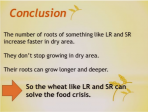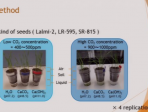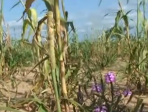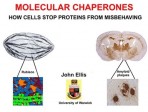 00:05:00
00:05:00
Can the wheat which grows in dry areas solve the food crisis?
Chiho describes her important work in looking for varieties of wheat which could help increase food production in arid areas.
More details | Watch now 00:07:00
00:07:00
Wheat gets over global warming.
Nao describes her work in investigating the ways in which wheat can be made to cope with the higher temperatures expected from global warming.
More details | Watch now 00:09:00
00:09:00
The biology of Striga
One of the major parasites is striga, a weed that sucks the juice and nutrients from cereal crops such as millet, sorghum and maize and causes great yield losses. A single striga plant can produce hundreds of thousands of seeds. The seeds are so tiny....
More details | Watch now 00:05:00
00:05:00
Do Touch Ep 1 | Preserving Plant Material
Introduction to systematics & DIY plant preservation techniques. In this first webisode of Do Touch, Daniel Domínguez invites young scientist and collectors to Label, love, & learn about the world. The aim of this seri....
More details | Watch now 01:27:00
01:27:00
Nature’s marvellous medicine
For hundreds of years we have used plants and their extracts for their healing properties. Ancient Egyptians chewed white willow bark to relieve fevers and reduce inflammation, and many years later scientists discovered that the bark contains salicyl....
More details | Watch now 01:04:00
01:04:00
Molecular chaperones: how cells stop proteins from misbehaving
Proteins are the action molecules of all cells, and to function properly, protein chains must fold and assemble correctly. But each chain of every protein runs the risk that it will combine with one or more identical chains to form nonfunctional aggr....
More details | Watch now 01:00:00
01:00:00
Science not stamp collecting? Botany from 1759 to 2059
Professor Hopper considers the vital role that the study of plant taxonomy and systematics has played in plant science. He considers, in particular, how these fields are transforming to meet the needs of 21st Century science as we address the challen....
More details | Watch now 01:04:00
01:04:00
The origins of flowers
Flowers are such a ubiquitous and familiar part of our modern world that it is easy to take them for granted. But as Darwin recognized, the exquisite details of their structure and appearance have been shaped by evolutionary processes over millions o....
More details | Watch now

